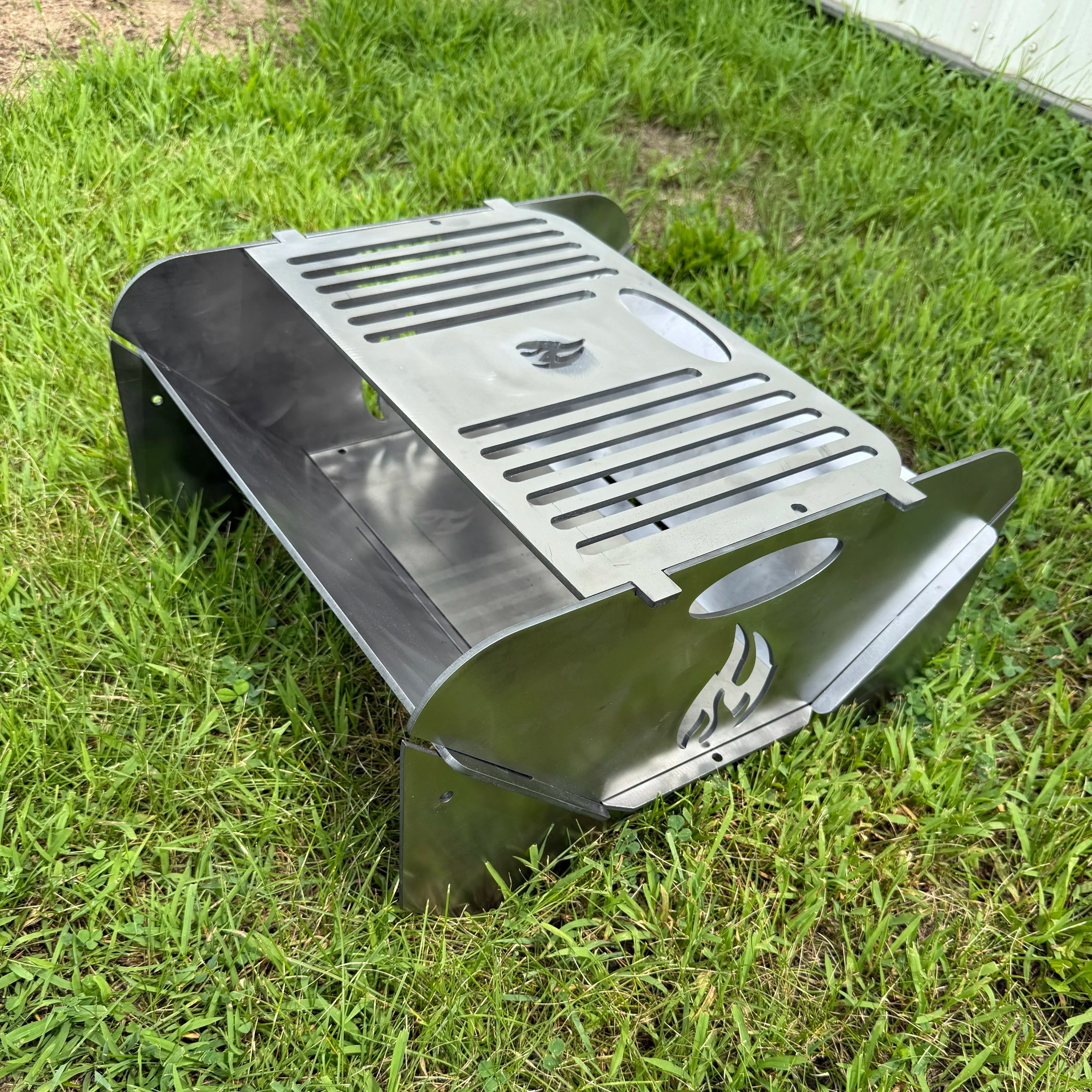The Perfect Size for Firewood
As the chilly air of winter creeps in, it’s time to gather your firewood for cozy evenings by the fire. Whether you’re living in a snug cabin deep in the forest or just prepping for winter nights at home, one question often arises: what’s the best size for firewood? Let’s dive into the art of splitting wood and why it matters.
Why Firewood Size Matters
The size of your firewood affects more than just how it looks stacked by your hearth. Properly sized firewood burns more efficiently, dries faster, and makes fire-building a breeze. The ideal size for most logs is about 12 to 14 inches long and 3 to 5 inches wide. This balance ensures good airflow, helping the wood dry quickly and ignite easily. (And if you want to know if your firewood is dry enough to burn, we have a full writeup on it, so check it out!)
Splitting your wood into uniform pieces also means better control over your fires. Consistent sizes ensure an even burn, reducing the chances of your fire sputtering out unexpectedly.
Do You Really Need to Split Firewood?
Not always, but it’s a smart choice. Unsplit logs can take much longer to catch fire, leaving you waiting in the cold. If the inside of a log is damp or hasn’t fully dried, it will create excess smoke and burn inefficiently. Splitting the wood exposes the inner surfaces, allowing moisture to escape faster and helping it dry evenly.
Of course, if you’re using a rocket stove, you’ll need to split your wood so it fits into the fuel chamber.
Unsplit logs also waste wood. A fire built with large, damp logs will burn poorly, leaving unburned chunks behind. Smaller, well-split pieces burn hotter and more completely, giving you more warmth for your effort. So as you can see, split wood is useful for campfires and fire pits as well.
The Benefits of Pre-Split Firewood
Having firewood ready to go is a lifesaver during freezing nights or sudden power outages. Imagine stumbling out to your woodpile in the dark, only to find unwieldy, damp logs. Not ideal! Splitting your wood ahead of time ensures you’re always ready for the unexpected—or just a spontaneous fireside evening.
How to Measure Firewood
Before you grab your ax, take a moment to measure. The goal is consistency. Most fireplaces and wood stoves are designed for logs around 12 to 14 inches long. Use a measuring tape to get a sense of this length, then keep it in mind as you chop. As for width, aim for 3 to 5 inches. Adjust based on the type of wood and how easily it splits.
Why Split Firewood Is Better
Faster Drying Time
Wood needs to dry thoroughly before it burns well. This process, called seasoning, can take weeks or months depending on the type of wood. Splitting your logs into smaller pieces speeds up drying by exposing more surface area to air. Smaller pieces are also less likely to trap moisture, ensuring they’re ready to burn when you need them.
Easier to Handle
Nobody enjoys wrestling with massive logs. Split wood is much easier to carry, stack, and store. Whether you’re moving wood from your yard to a firepit or hauling it into the house, smaller pieces save time and energy.
Better Fires
A well-built fire starts quickly, burns steadily, and produces lots of heat. Split wood catches fire faster and burns hotter than large, unsplit logs. It also allows you to control the fire’s size and intensity more effectively.
Spot Problems Early
When you split wood, it’s easier to spot issues like rot, mold, or insect infestations. A small patch of mold or decay on the outside of a log can hide much bigger problems within. By splitting the wood, you can identify and discard bad pieces, ensuring your fire burns cleanly and safely.
Tips for Splitting Firewood
Use the Right Tools
An ax or maul is essential for splitting wood. For particularly large or knotty logs, consider a wedge and sledgehammer. Modern tools like log splitters can also save time and effort, especially if you’re processing a large amount of wood.
Choose the Right Wood
Hardwoods like oak, maple, and hickory are excellent for firewood because they burn hot and last a long time. Softwoods like pine ignite quickly but burn faster and may produce more smoke. Whatever you choose, make sure the wood is well-seasoned.
Safety First
Always wear gloves and sturdy boots when splitting wood. Clear your workspace of debris and make sure your chopping surface is stable. Splitting wood is rewarding but can be dangerous without proper precautions.
Storing Your Firewood
Proper storage is key to keeping your wood dry and ready to burn. Stack your firewood off the ground to prevent moisture from seeping in. Cover the top of the stack with a tarp or a dedicated wood cover, but leave the sides open for airflow. Good ventilation is essential for drying and keeping your wood in top condition.
Why Size Still Depends on You
While 12 to 14 inches is a great general rule, the “perfect” size for firewood can vary. If you’re using a small wood stove, you might need shorter logs. For a large outdoor firepit, longer pieces might be just fine. Your personal preferences, fire-building style, and equipment all play a role in determining what works best.
Conclusion
When it comes to firewood, size really does matter. Splitting your logs to the right dimensions makes them easier to dry, handle, and burn, ensuring you’re always ready for a cozy fire. Whether you’re preparing for a cold winter or planning a camping trip, understanding the basics of firewood size and preparation can make all the difference. So grab your ax, measure twice, and split smart. Warm, crackling fires await!






